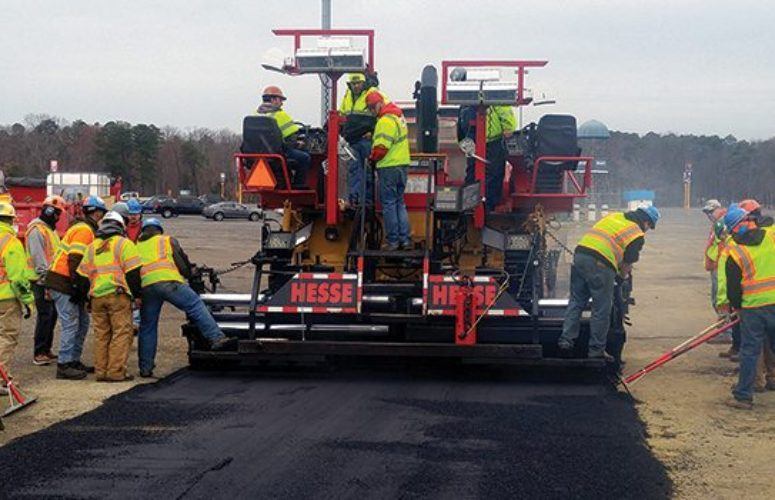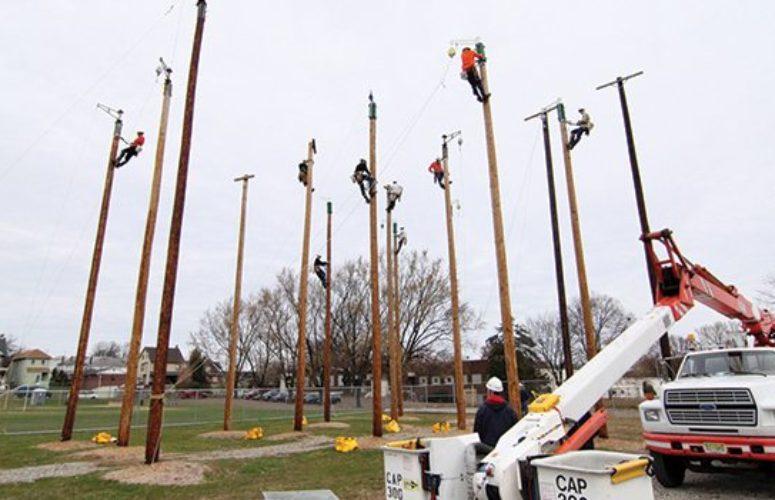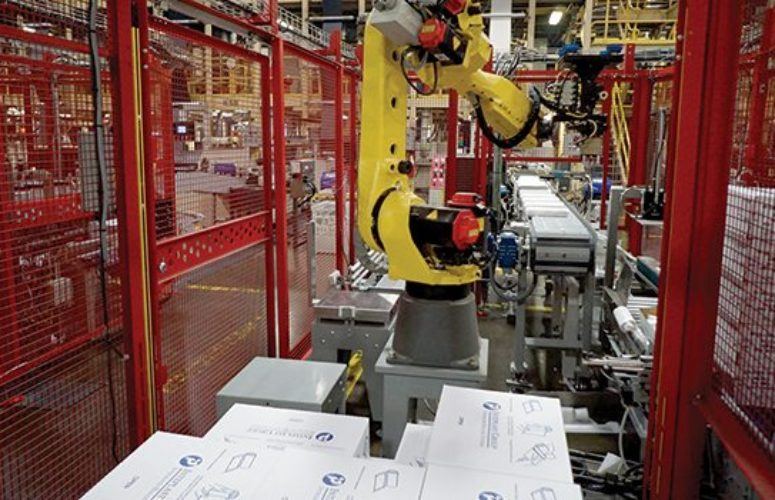
Construction Trades Make Sure Workers Have Solid Skills
Training NJ's Workforce
By Colleen O’Dea, Contributing Writer On Mar 20, 2017Before an electrician wires a new office building, a road worker flattens new asphalt or a crane operator moves a steel beam in place on a high rise or bridge in New Jersey, he has had hundreds of hours of training provided by his union.
Carpenters, plumbers, operating engineers, ironworkers, electricians and others offer apprenticeship training programs that combine classroom studies and hands-on labs with work in the field. They also provide continuing education classes for experienced tradesmen at union training facilities in all regions of the state.
For new apprentices, the goals are to create well-trained workers who will be able to do quality work on which employers can depend. Depending on the trade, there can be a wide range of jobs journeymen might do, so training programs may cover a wide spectrum of topics. Ensuring apprentices’ safety is also critically important, as there is some level of danger in all the trades.
“When you put people on big machines, they can do a lot of damage if they are not properly trained,” says Greg Lalevee, chairman of Engineers Labor-Employee Cooperative and business manager of International Union of Operating Engineers Local 825. “For us, training is our absolute lifeblood and integral for our future.”
“We do require that all of our members go through OSHA 30 training,” says Bernie Corrigan, president of the International Brotherhood of Electrical Workers Local 102, of the Occupational Safety and Health Administration’s training on industry hazards. “Safety is always first,” he says.
For journeymen, courses run the gamut from refreshers designed to provide workers with necessary continuing education credits – including all-important safety classes and other certificates needed for individual trades – to courses that can broaden their skills to help them specialize or get proficient on a new machine, to business classes meant to give them the knowledge they need to start their own contracting firms. The union training centers are also bringing in the latest equipment and training workers at all levels to make sure they know how to operate the newest machines.
For instance, Lalevee says the union invested $1.5 million last year in new equipment, including a new simulator and GPS-enabled equipment, to better prepare operators for the machines they will use on the job.
Like schools, union training programs are always looking for the best ways to get workers to learn subject matter and skills.
“We are always trying to do a better job,” says Eric Sivertsen, executive director of the National Electrical Contractors Association of Northern New Jersey. “How do people in educational situations learn more effectively, more efficiently?”
Lalevee says the goal of the training at IUOE 825’s 38-acre campus in Dayton, including an outdoor expanse filled with backhoes, bulldozers and cranes, is to train heavy equipment operators in a way that mimics the jobs they will be doing.
“Basically, it’s as real life as you can find,” he says. “While they are learning, they can make mistakes outside the public domain.”
The Operating Engineers training facility offers its most intensive training during the winter months. It covers a broad range of topics and equipment: national gas pipeline installation, hazardous materials training, paving, cranes and pile driving. Its apprenticeship training is a four-year program. It includes at least 144 hours of classroom and hands-on training each year, and 1,500 hours of work experience in order to advance to the next level of apprenticeship.
Workers can learn to operate one or a number of machines, and try out different equipment to see what best suits them. Some may start with one machine and then become proficient in others.
“The individual who excels at more disciplines is a more valuable employee,” he says.
In the case of electrical workers, the wide-ranging training covers work in residential and industrial buildings, security system setups, work with high voltage and with solar equipment.
“Whether it’s a house or an office or a PSE&G substation, there’s a broad breadth of training that needs to be completed,” Sivertsen says. After completing a five-year apprenticeship program, a journeyman is prepared to work via referrals out of the union hall; for one contractor; or as a sole practitioner.
Corrigan says that, at its core, the IBEW’s apprenticeship has remained the same, with the theory of electricity and foundational skills remaining constant.
“We do, at times, modify training in the latter years of apprenticeship to reflect changes within the industry,” he notes.
Local 102 has a 15,000-square-foot training facility in Parsippany that includes developing bid estimates, computer-aided design and building information modeling. Beyond that, IBEW has established several higher education partnerships to further benefit members. Union County College makes more than 100 courses available to members each semester. New Jersey Institute of Technology provides safety-related courses such as Infection Control Risk Assessment and Hazardous Waste Operations and Emergency Response. And the local has signed a memorandum of understanding with Rowan University that would allow apprentices to earn credit through IBEW courses and add online courses from Rowan to earn a Bachelor of Arts in Construction Management.
“I feel that our members have some of the most diverse training opportunities available,” Corrigan says. “In addition to the courses we offer free of charge, we also have a tuition reimbursement program that will return up to 75 percent of tuition costs to our members for approved courses.”
According to Richard Paredes, training director for IBEW Local 164 in Paramus, “The times of taking an apprentice under the wing of a journeyman and letting him learn in the field have kind of gone by the wayside. We pay apprentices full-time wages and benefits to go to school.”
IBEW has 14 labs in a 38,000-square foot facility, complete with computer-based and hands-on learning that typically accommodates about 160 apprentices at any given time. The union is building a 3,600-square-foot addition to provide more training space.
In addition to the skills needed to work, the training apprentices receive also gives them 53 American Council on Education College credits, which they can put toward an associate’s degree.
Classes are updated to keep pace with technology, and instructors attend the National Training Institute’s program to teach them “how to become better instructors,” he says.
Paredes says training includes a large safety component due to the dangers of the job.
The program also offers refresher courses for journeymen and technicians, as well as classes in leadership and foremanship.
Similarly, the Northeast Regional Council of Carpenters, which has a five-year apprenticeship program, has partnered with the county colleges and Thomas Edison State University to give college credits to apprentices who continue on to seek a degree. The NRCC has training centers in Kenilworth and Hammonton that offer such diverse classes as flooring, locksmithing and upholstery, and more than a dozen certifications, including aerial lift operator, signalman and scaffold erector.
Union officials say contractors appreciate their training programs because they know they are getting well-trained, experienced workers who will do a good job and do it safely. Having highly trained workers also helps both the journeymen and the state’s economy.
Corrigan says, “It’s all about creating job opportunities not just for our members, but for New Jersey in general. A more prosperous New Jersey is good for everyone.”
Related Articles:






